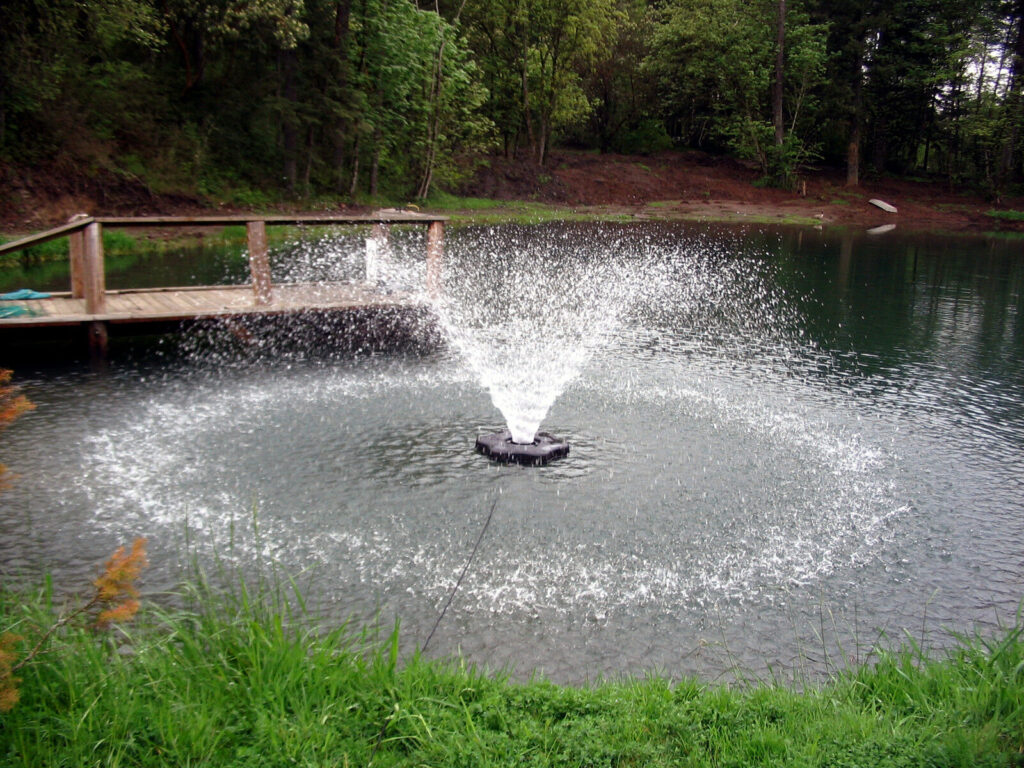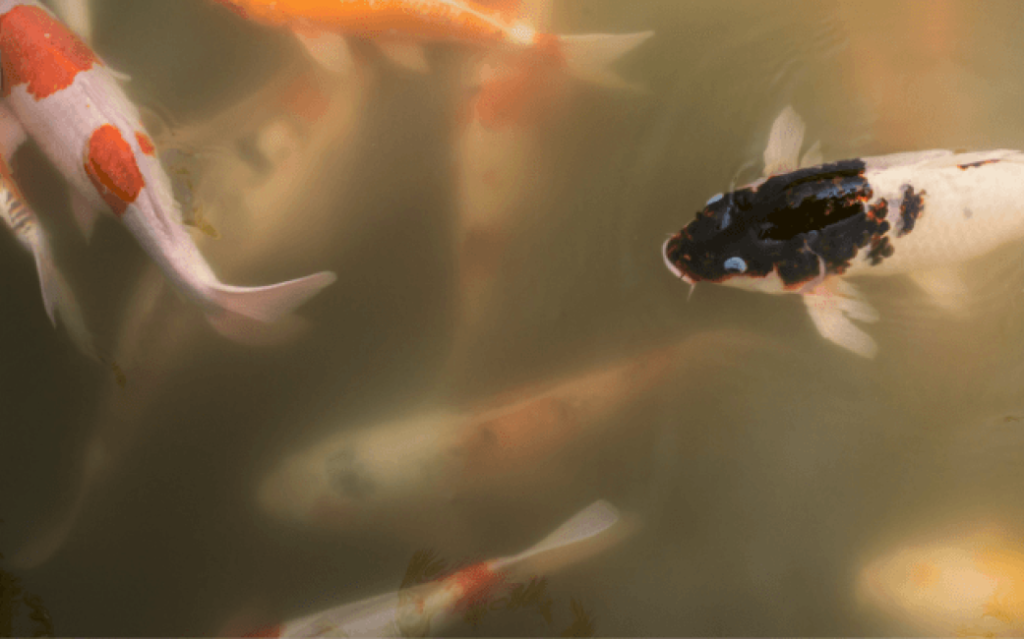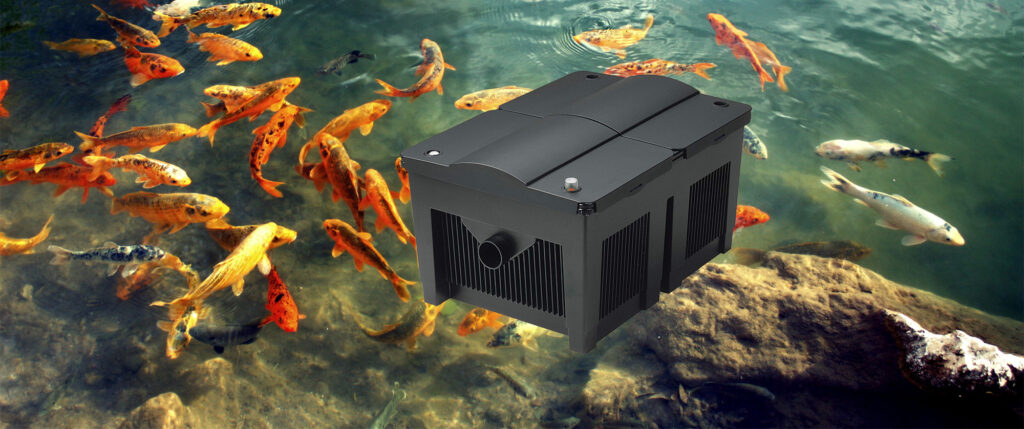
Winter might be a very cold time, but many people find it quite wonderful and enjoy the cold and whiteness of everything. However, while winter might be appealing, if you own a pond, it might not be your favourite time of the year. Your flora and fauna might not appreciate the cold and might end up dying because of it. One way to keep the pond from freezing in winter is by using electricity. However, the bills might add up and make it an expensive option. If you are looking for tips on how to keep your pond from freezing without electricity, this post is for you! We will consider in detail some of the ways to ensure your pond doesn’t freeze over, the important things to consider before trying the tips and much more. So, read on to find out all these essential information.
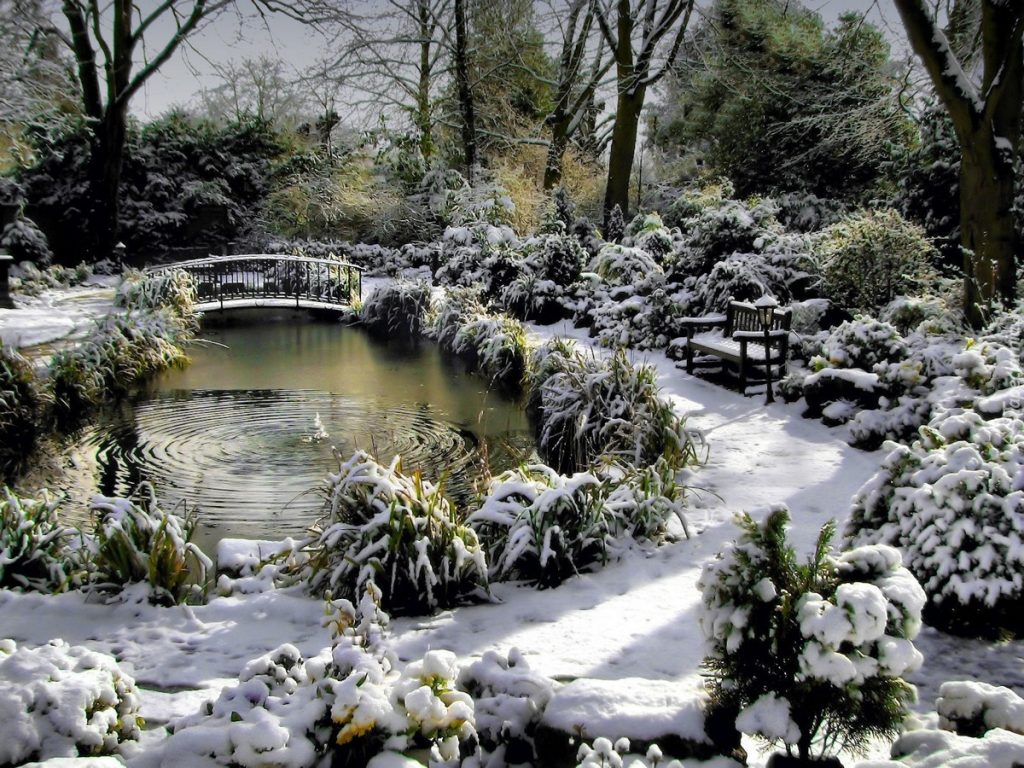
If your pond only freezes over for a short period in winter, say for a couple of days at a time, then you shouldn’t be overly concerned about a frozen pond. Your fish will be able to survive. Furthermore, if you happen to have no fish in the pond, then you absolutely do not need to worry about a frozen pond. In fact, your pond can do with a bit of freezing.
If you have chosen the right species of fish for your environment, with a frozen pond in mind, your fish will not really mind the cold. They might even enjoy it! With the right species, your pond will remain a thriving home for the fish, and they won’t get too cold.
However, a frozen pond can become a problem due to decaying plant matter and fish waste underneath the frozen layer. This can build up and cause the pond to become rather toxic to your fish, making them sick, or in more severe cases, causing death.
It is really no secret that the water in your pond needs to be oxygenated for your fish to remain alive and healthy. If the whole pond is frozen, without any way for oxygen to be exchanged through the surface, the oxygen levels in the water will drop dangerously low, and your fish might die.
That is why many pond owners create a hole in the ice so that the gases can escape and oxygen levels can remain sufficient for the fish in the pond. Later in this post, we will discuss in detail how you can do this.
One simple way of keeping the fish healthy is by keeping your pond clean. Regularly clean away fish waste, decaying plants and uneaten fish food to prevent any toxic gases from building up in the water. You should install a filter that will continually clean the pond and ensure the proper circulation of oxygen.
Further you can read detailed information about methods that will help you to prevent pond freezing in winter and not to use electricity for that:
A pond heater is an effective machine that is used to alter the temperature of the pool. Due to its function, it is usually used in the cold winter as an alternative to electricity when your pond is either frozen or filled with snow.
The aim of the pond heater is to make your fish feel comfortable inside the pond and to increase the oxygen level of the water. It also serves to ensure the proper exchange of gas in the water.
The pond heater can heat the pond in a given period. It should be noted that the pond heater isn’t the same as the de-icer.
The pond heater employs a type of electric heating device. This device is pushed into a heated chamber where it connects with the heating element. The water passes through this chamber and gets heated right before it enters the pond. This process is repeated until the entire pond reaches the desired temperature.
There are several factors to consider when choosing a pond heater for your pond.
You need to consider the power of the heater. This will be affected by the size of the pond. If you have a large pond, you will obviously need to heat up a larger amount of water. Hence, you will need a heater that has more wattage. Look for heaters with a wattage of around 1200W or even more.
Conversely, if you have a small pond, you just need a heater with a smaller wattage.
You should also consider buying a heater with an in-built thermostat. Having a thermostat means that the heater will turn off once a certain temperature is reached.
Your pond heater can either run on electricity or oil. Since this post is about how to keep a pond from freezing without electricity, you should opt for the cheaper source of power: fuel. Using this type of heater is an excellent choice if you seek a long-term solution.
For ponds with fishes, gas exchange is very important. The pond heater has the ability to cut a hole through the surface of the ice to allow any toxic gases to escape and prevents build-up. Look for a pond heater that delivers excellent gas exchange as well.
Installation of pond heaters can be easy or difficult depending on your level of expertise and the model. Most of the best options on the market come with clear instruction manuals that can help you. If you find installation a hassle, then you can opt for a pond heater that simply floats on the surface of the pond, thus requiring little or no installation.
Another way you can keep your pond from freezing without electricity is by using solar pond aerators. Aeration and exchange of gases is very important to keep your fish healthy and alive throughout winter.
Earlier, we discussed how important oxygen is in a pond, and this device serves to ensure there is enough oxygen in the water. One problem many users have had with pond aerators is that they consume much electricity.
Fortunately, there are solar pond aerators that function without using electricity.
There are different types of pond aerators, with each one having its advantages.
If your pond is mainly for decorative purposes, you might opt for the fountain aerator. This aerator usually floats on the water surface and comes with a pump and nozzle for spraying water into the pond.
These aerators work by drawing water from the pond and spraying it into the air. As the sprayed water comes back down, oxygen is collected from the air and delivered to the water.
As the name implies, these aerators come with all the important parts located at the bottom of the device and inside the water. It comes with an air bubbler, compressor, and tubing that simply release oxygen from the air into the water.
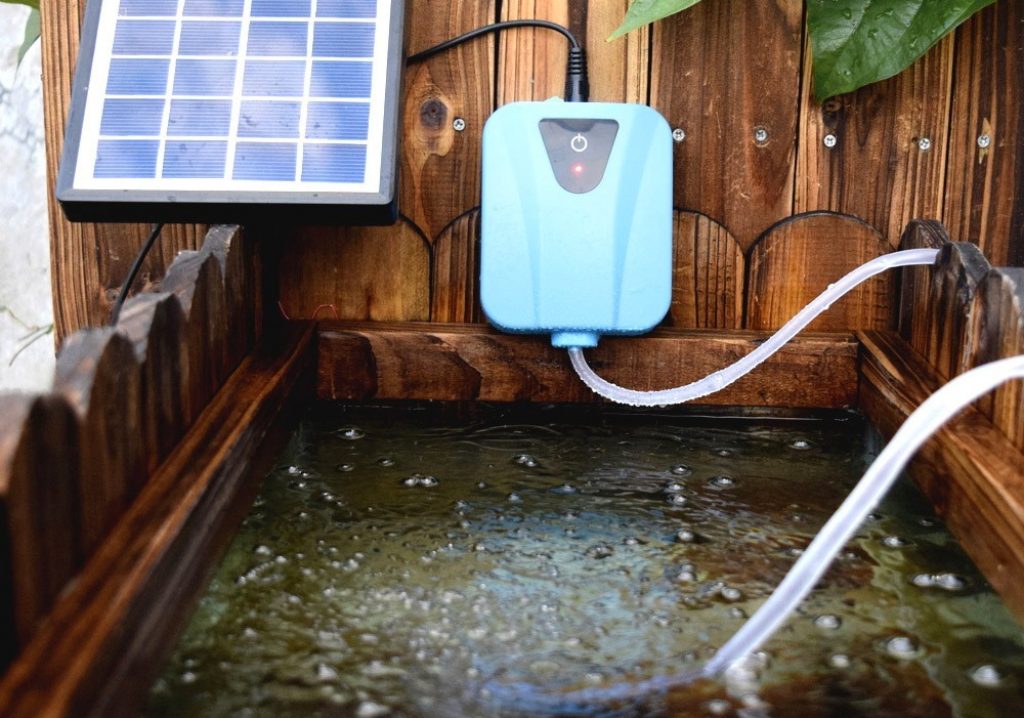
These aerators work by drawing air from the atmosphere, passing it through the tubing, and releasing the oxygen into the water.
These types of aerators are very common and are largely preferred to other types as they only pump air instead of water.
The sun rays are a reliable source of energy that can power the aerator in place of electricity. To ensure efficiency, install the solar panels where the correct amount of sunlight can be drawn in during the day.
Another type of aerator that is arguably more environmentally friendly is the windmill aerator. These aerators aren’t powered by electricity or sunlight. Instead, they use the air as the source of energy. The wind pushes the fan, which transforms into energy that becomes an electrical current.
In choosing the right pond aerator, there are several features that you need to consider. Let’s see them.
We do have two different types, the floating and the solar pump kit. The solar-powered aerator kit does have a smaller air pump and cannot be that effective when used in larger ponds. With this pond aerator type, you will not need any extra wiring or power, thereby saving you from the long-running cords. It functions well when under heavy sunlight which makes it an excellent choice during the summer and spring. With the small ponds or the water tanks, it is capable of helping you pump oxygen into water that will in turn help in preventing stagnation. No extra cost will be added to your power bills as it will be powered with solar energy. Floating aerator sprays oxygen into the water from below the surface, thereby doing away with the harmful gases like ammonia and carbon dioxide. It is a very efficient aerator capable of offering enough oxygen when it is used in the smaller ponds. It is also capable of adding beauty to the pond water due to its decorative shape.
Any great pond keeper will always check on the shallowness or depth of the pond first. It is important to know how deep your pond is so that you can know the right pond aerator to buy. As we have mentioned above, the fountain pond air pumps do work best when used in shallow ponds while the bottom diffuser can work best when used in the deeper ponds.
The pond shape is essential when it comes to choosing the air pump system of the pond since you will always want all the water to go through circulation and not to accumulate at any part. The standard systems of aeration are best when it comes to typical pond shapes like ovals, triangles, and circles where there is no risk of stagnant water. In case the shape is irregular, there can be an extra cost for you since you might need several aeration plates.
When building your pond, it is very important that you make it deep; especially if you believe it will freeze over during winter.
By having a deep pond, you will discover that the pond will maintain a good temperature regardless of the weather. For instance, in the summer, a deep pond will be cool while in the winter, it will feel warm.
A shallow pond can lead to certain complications. It will freeze quite easily. If your pond has fish and it is deep, when the cold arrives, they can swim away from the cold surface and stay in the lower depths where the water is warmer.
Pond water is also important with regards to aeration. The more liquid water there is in a pond, the more oxygen the pond can hold; since there’s more water your fish can swim to the bottom where it is warmer.
Well, opinions are somewhat divided on the best pond depths. Personally, from experience, we highly recommend a minimum pond depth of 18″ if you have fish in the water. You can decide to go even deeper just to be on the safe side.
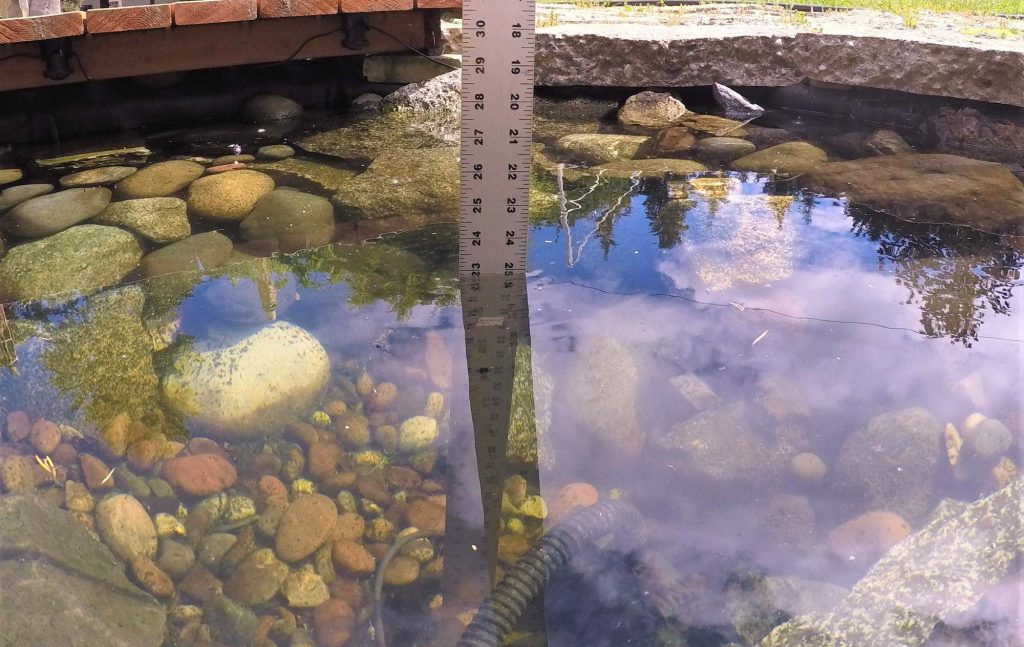
Floating devices are very common options that are used in a wide variety of applications. These devices are not only used for frozen ponds, but they are also used to keep farm animal water tanks free of ice.
These devices include floating saltwater bottles, table tennis balls, or a dedicated ice preventer.
These devices work in a simple but highly efficient manner. As the wind hits these devices, they move around on the surface of the water or ice, thus ensuring that the hole you have made doesn’t completely close over. By moving to and fro, they break up ice formations and ensure that your pond is snow-free.
There are several ingenious methods that can be adopted to keep your pond healthy during the winter without using electricity. Let’s consider some of them.
We have seen all the things to do in winter. What of the things you shouldn’t do? This section covers this aspect.
Earlier, we pointed out the need to create a hole in the ice. You shouldn’t bang on the ice to create the holes. Why? Well, by banging on the ice, you will create sound waves that can be very harmful to the fish. If you want to create a hole, you can check above for the tip that we provided. You can use a quality de-icer to burn a hole as well.
We earlier pointed out that you can use a de-icer in creating a hole. However, a note of caution: never use a cheap de-icer. A cheap de-icer might work for a short period, but after some time, it will stop working; which will be detrimental to the health of the pond.
It might be tempting to use the heater every second of winter, but this is actually more harmful than helpful. The heater warms up the water, and if left on 24/7, overheats the water. Furthermore, leaving it on can eat into your energy bills.
What should I do if a pond freezes?
If your pond freezes over, you should follow the steps listed above in the article. Create a hole in the ice to ensure proper exchange of gases, turn off fountains and pumps, especially in cases of prolonged freezing.
So there you have it: How to keep a pond from freezing without electricity. Your pond might freeze over during winter, but by following the tips provided in this article, you will know the right steps to do to prevent and stop it. You can use water heater, aerators, and floating devices. We hope that this post will assist you when winter comes around.
